Replica of a Killer Whale Clan Crest Hat Item Number: E433020-0 from the National Museum of Natural History
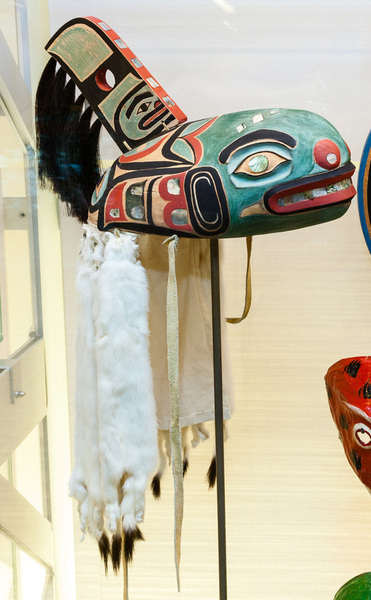
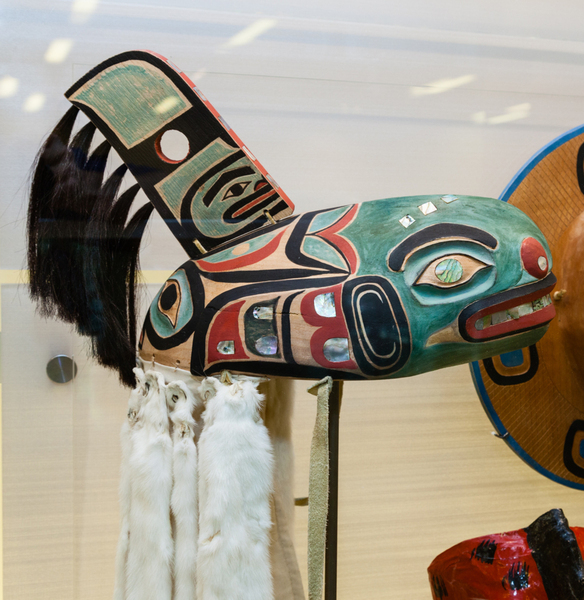
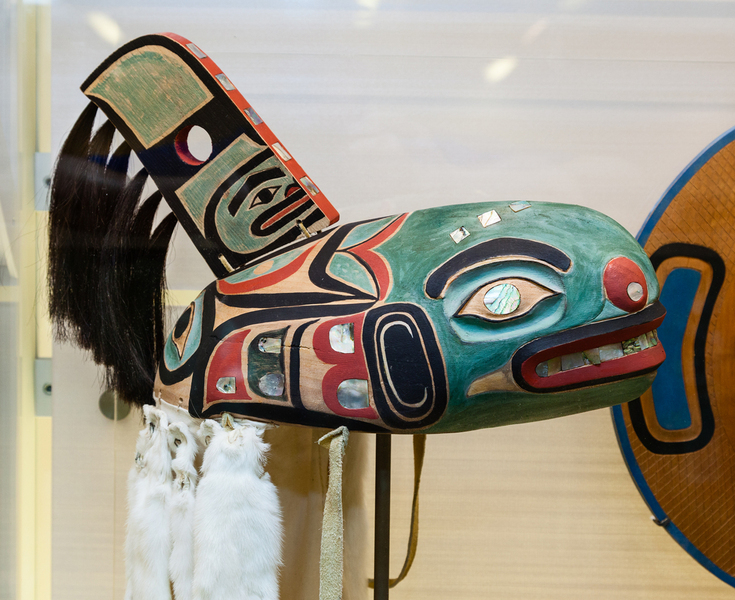
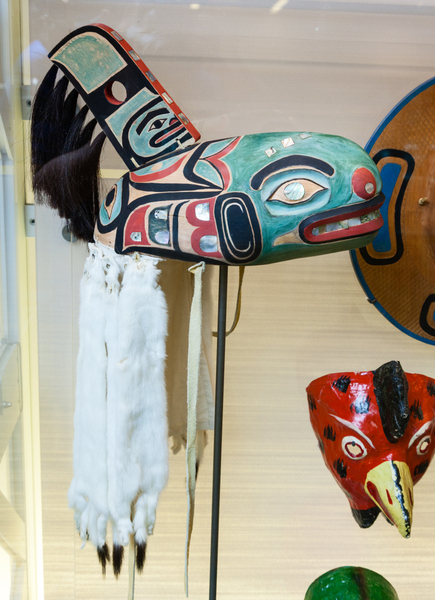
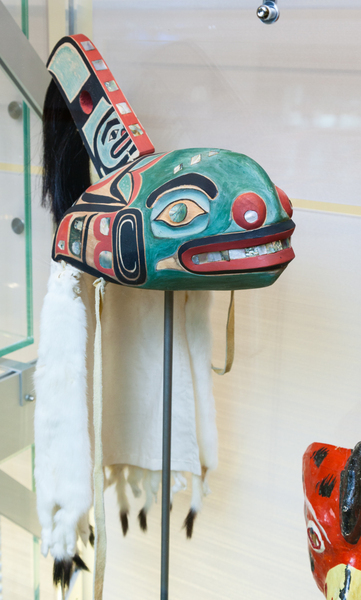
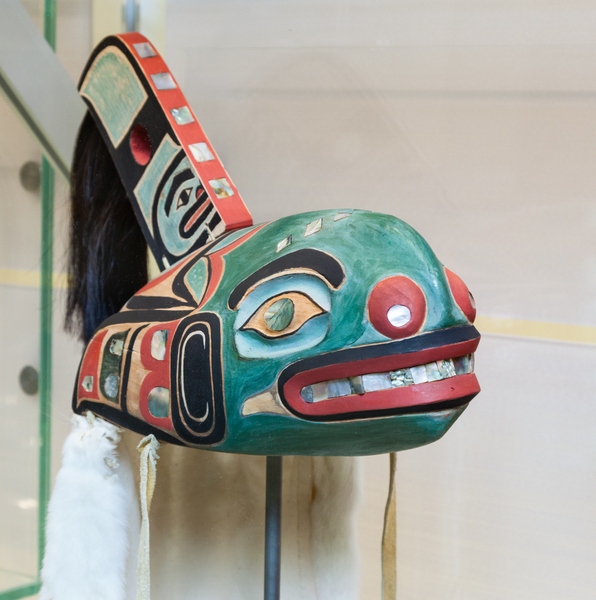
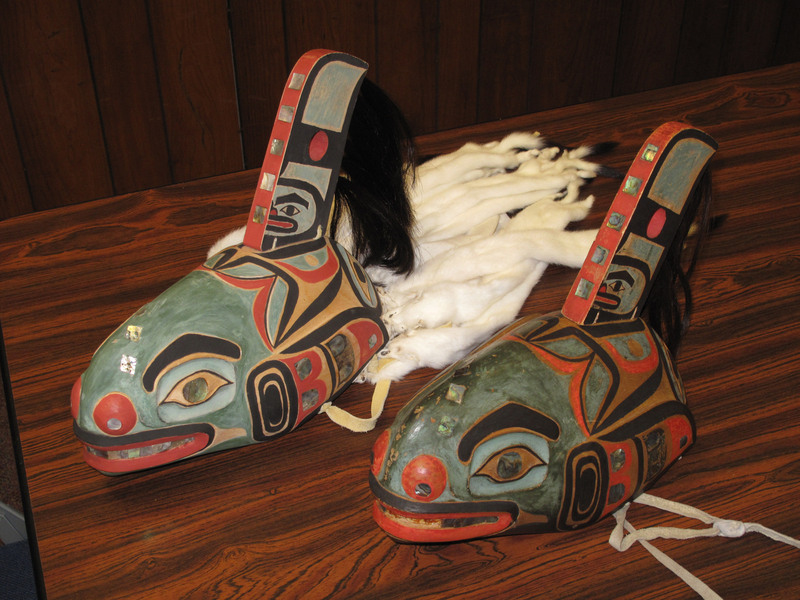
Notes
Replica of a clan crest hat in the form of a killer whale, which is the primary clan crest of the Dakl'aweidi clan. The replica is an exact duplicate of the original clan crest hat (E230063) which was repatriated to the Dakl'weidi clan in 2005. The original hat was laser scanned and documented using photogrammetry by the Smithsonian Office of Exhibits Central (OEC). With permission of the clan, the NMNH Education Department filmed the entire replication process. For a detailed description of the replica manufacture process, see the article by Hollinger et al. in the Museum Anthropology Review. The whale's body is machine-carved from a block of alder wood provided by carver Steve Brown. The whale is shaped as if it is emerging from the ocean. Six plugs of human hair hanging off the back of the removable dorsal fin (made from a separate piece of wood plank) symbolize the water falling from the fin (Gushteheen in Tlingit). The dorsal fin is attached by deerskin ties through small holes in the whales back. The hole in the dorsal fin is a common Tlingit design on Killer Whales. It represents the hole in the fin of the first Killer Whales, made by a man trying to escape from an island on which her was marooned. The man put his hands through the holes in the fins and the whales towed him to safety. A series of hand cut and fitted abalone shell inlays over the back of the whale represent water glistening on the back. Abalone shell is also used to highlight the teeth, nostrils, eyes and fins of the whale. The 10 white ermine skins attached with thread to a cotton cloth trailer represent the froth or wake of the water around the whale as it emerges. The cloth trailer is attached with string through small holes in the rear rim of the hat. Deerskin straps attached to either side of the hat are used to secure the hat around the head of the wearer. The eyes and patterns on the fins, back and rear of the whale are in the common formline design of the Northwest Coast. Colors of commercial paints used in the designs are a light greenish-blue, a darker greenish-blue, red and black.Reference: Hollinger, R. Eric, Jr Edwell John, Harold Jacobs, Lora Moran-Collins, Carolyn Thome, Jonathan Zastrow, Adam Metallo, Günter Waibel, and Vince Rossi. 2013. "Tlingit-Smithsonian Collaborations with 3D Digitization of Cultural Objects." Museum Anthropology Review 7 (1-2): 201–53.
Item History
- Made
- Collected
- Received from National Museum of Natural History on May 22, 2013
What
- Name
- Replica of a Killer Whale Clan Crest Hat
- Identification Number
- E433020-0
- Type of Item
- hat
Who
- Culture
- Tlingit
- Received from
- National Museum of Natural History
Where
- Holding Institution
- National Museum of Natural History
- Made in
- “United States: District Of Columbia / Alaska: Washington / Angoon” ?
- Collected in
- “United States: District Of Columbia / Alaska: Washington / Angoon” ?
When
- Acquisition Date
- on May 22, 2013
Other
- Accession Number
- 2064117